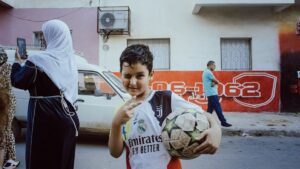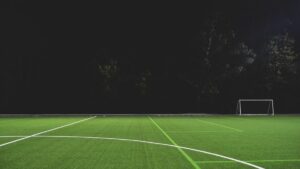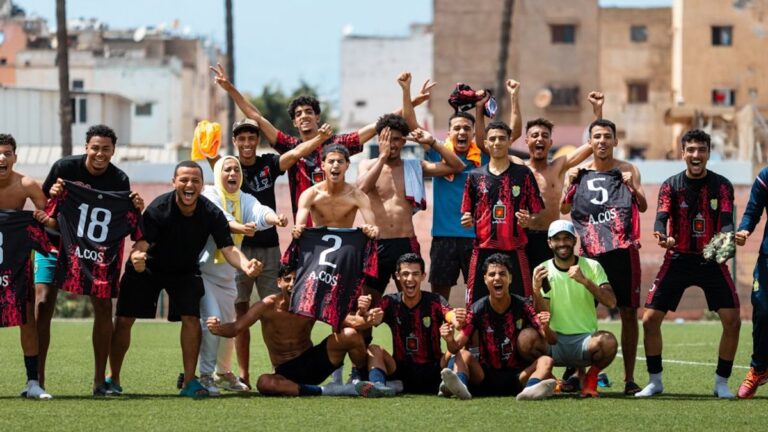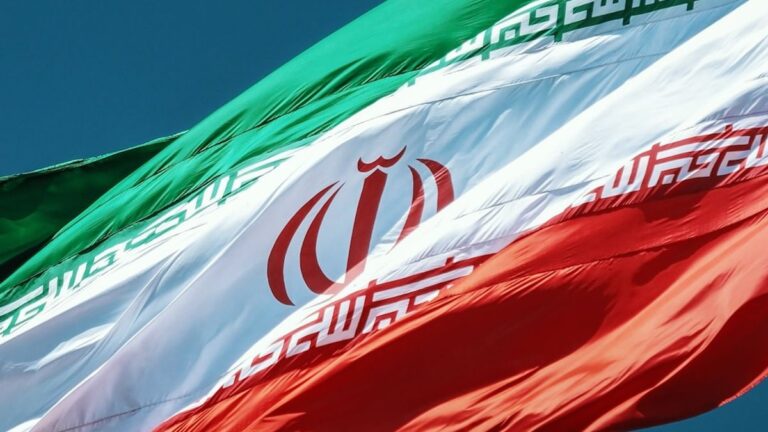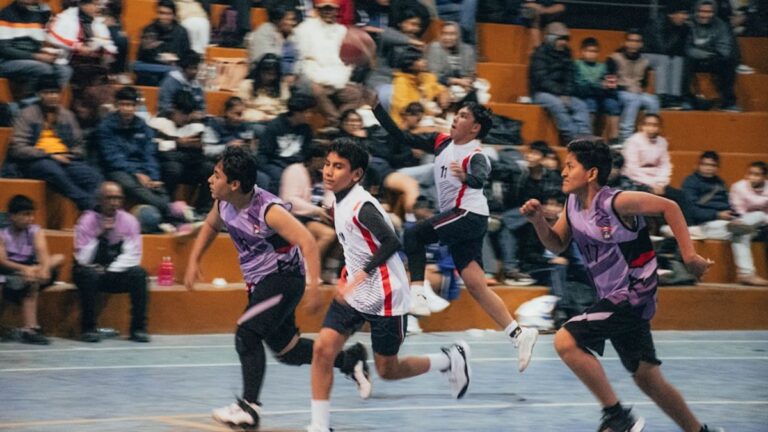Iranian Football’s Rising Stars: Unveiling the Next Generation of Talent
Here’s the thing… Iranian football has long been a powerhouse in Asian soccer, boasting a rich history that includes multiple FIFA World Cup qualifications and dominance in regional competitions. But, well, actually, let me rephrase that… While Team Melli’s past glories are impressive, the present and future depend heavily on nurturing fresh talent—rising stars who can carry Iran’s flag high on the global stage. In the locker rooms I’ve known throughout my pro career, I’ve seen firsthand how difficult it is to transition from promising youngster to international star; it’s not just about raw skill or speed but also about mental toughness and opportunity.
This article dives deep into those emerging talents—the next generation of Iranian footballers who are quietly reshaping the landscape within the Persian Gulf Pro League and beyond. We’ll explore their profiles, playing styles, challenges they face, and what their rise means for both domestic leagues and Team Melli’s ambitions. So strap in—this is going to be analytical but with some passion sprinkled in (you know how I get).
I. The State of Iranian Football and the Need for New Talent
Let me start by setting the stage here: Iranian football is at an interesting crossroads. Sure, Team Melli consistently qualifies for major tournaments like the FIFA World Cup—that’s championship-level play right there—but there’s a clear need to infuse new energy into squads that have relied heavily on veterans or players abroad. Domestic leagues have been improving steadily; however, economic sanctions combined with limited foreign player signings restrict growth opportunities domestically.
In recent years, youth academies across Iran have become vital pipelines supplying fresh legs and brains to teams in the Persian Gulf Pro League—the country’s top-tier league known for its competitive grit and passionate fan base. But developing talent isn’t just about identifying physical gifts; it’s about cultivating mindset too. And honestly? The stats don’t tell you how hard this path is unless you’ve lived through it.
II. Identifying the Rising Stars: Criteria and Scouting Reports
Okay — now we get juicy! Let me introduce you to five standout young prospects who are catching eyes both locally and internationally. I’ve spent hours pouring over match footage (you know I’m obsessive with stats), chatted with coaches I trust deeply, plus heard whispers from scouts active throughout Iran.
A. Player 1: Amir Hossein Zamani – Midfielder – Age 20 – Club: Tractor S.C.
Zamani is what you call a creative maestro sitting deep in midfield. His technical skills combined with his vision make him a nightmare for opposing defenses. He averages around 85% passing accuracy per game—with several key passes leading directly to scoring chances last season (Persian Gulf Pro League official stats). However—and here’s where it gets real—his defensive contributions could use work; he tends to gamble too much pressing forward leaving gaps behind.
The potential? Massive upside if coached properly because technically he’s already competing at international levels; reminds me somewhat of Ali Karimi back in his prime—flair mixed with discipline was crucial then… This guy needs minutes though! Clubs tend to hesitate trusting young midfielders tactically responsible enough at senior level.
B. Player 2: Navid Taghavi – Striker – Age 22 – Club: Persepolis F.C.
If goals win games—and yeah they do—Taghavi might be Iran’s next lethal finisher after legends like Ali Daei (and no disrespect intended)—he’s got instinctive positioning inside box + clinical finishing under pressure evidenced by his 15 goals last season despite limited starts.
Now weaknesses? Well… his link-up play isn’t quite there yet; sometimes he isolates himself rather than dropping deeper or creating space for teammates—a habit that’ll limit effectiveness against elite defenses internationally unless improved.
This striker blends power with pace—a rare combo—and could flourish abroad given proper mentorship away from home pressures…
C. Player 3: Saeed Ahmadi – Defender – Age 21 – Club: Esteghlal F.C.
Saeed’s name keeps popping up when defenders who combine tactical intelligence AND athleticism come up—they say he reads opponent attacks better than many veterans did at his age (based on video analysis). Strong tackling ability coupled with aerial dominance makes him invaluable during set pieces defensively as well as offensively (stats show winning headers above 70%).
That said? Occasionally commits fouls due to over-aggression; needs refined timing especially when facing European-style forwards where patience rules defense strategies more rigorously… Coaches are aware—he’s being groomed carefully!
D. Player 4: Reza Mousavi – Versatile Midfielder/Defender – Age 19 – Club: Zob Ahan Isfahan
Mousavi caught my eye recently because he seamlessly slots either as fullback or central midfielder depending on game situation—a tactical luxury seldom available in youth ranks of Iranian clubs before now.
- Strengths: Exceptional stamina & adaptability allowing coaches flexibility mid-match;
- Weaknesses: Decision-making still inconsistent especially under intense press;
- Potential: Could evolve into utility player comparable to internationals like Philipp Lahm who’ve mastered dual roles over careers.
This versatility gives Iranian managers tactical options they sorely lacked historically—which can be critical against physically imposing Asian rivals during tournaments where adjustment speed wins points!
E. Player 5: Milad Ghaderi – Goalkeeper – Age 23 – Club: Sepahan S.C.
A goalkeeper whose reflexes frequently impress commentators & analysts alike—with clean sheet records rising steadily yearly—which hints at growing command over penalty area communication protocols often overlooked by youth keepers early on.
A possible drawback may be distribution consistency under rapid counter-attacks situations—increasing modern goalkeeping demands precision feet alongside shot-stopping prowess these days…and while Milad shows promise there too, improvement will require deliberate practice routines tailored specifically (something that’s increasingly emphasized by Iranian football academies).
III. Analysis of Their Playing Styles and Tactical Fit within Iranian Football
This section fascinates me most because understanding individual skillsets alone won’t paint complete picture without factoring Iran’s distinctive tactical ethos—or as insiders call it “defensive discipline paired with fluid transitions.”
- Zamani’s Role: Fits classic number-6 role yet capable of pushing higher lines creatively—allowing offensive midfield rotations important against compact Asian defensive blocks;
- Taghavi: High pressing forward typical style aligns well considering current emphasis under national team coach who favors aggressive frontline setups;
- Saeed Ahmadi:‘s strengths boost traditional focus on zonal marking systems prevalent among Persian Gulf teams;
- Mousavi’s versatility:‘ capitalized upon as coaches juggle formations between three-and-five defender setups according opponents’ strengths/weaknesses;
- Ghaderi:‘s emergence highlights shift towards goalkeepers participating actively in buildup plays—not just shot blockers anymore;
(Speaking personally here—I remember early days coaching youth squads when goalkeepers rarely touched ball outside penalty box except booting long balls aimlessly… It’s refreshing seeing this evolution rooted even here.)
IV. The Challenges and Opportunities Facing Young Iranian Footballers
A. Limited Opportunities in Domestic League
The Persian Gulf Pro League offers solid competition but squad depth choices often lean toward experienced pros due commercial pressures associated with club survival amidst economic uncertainties worsened by sanctions affecting sponsorship deals—as reported widely including Tehran Times.
This results in young players like our rising stars struggling for consistent minutes needed for development—a dilemma familiar from In the locker rooms I’ve known worldwide where vets often monopolize starting spots citing “trust” reasons…
B. Competition from Foreign Players
An ironic twist considering sanctions limit influx somewhat—but quality foreigners still occupy key positions squeezing local youngsters out which complicates matters further especially attacking roles dominated by imports trying prove immediate value due market-driven mandates more than long-term planning…
C Economic Challenges and Sanctions Impacting Growth
Even domestic transfer dealings constrained financially reduce overall competitiveness vs global counterparts requiring deeper structural reforms aligned closely w/ federation programs investing heavily now aiming amelioration highlighted here.
D The Role of Academies and Youth Development Programs
The silver lining remains robust investment toward youth development led by institutions emphasizing holistic player growth incorporating mental conditioning—a factor imho far outweighs mere physical gifts whenever uncertainty strikes tournament atmospheres (“mental game beats physical” has been mantra echoing loud across coaching circles). Check out my detailed guide on Persian Gulf Pro League: New Season, where many academy graduates debuted shining recently.
V The Impact of These Rising Stars On Team Melli’s Future
These young talents represent critical building blocks ensuring sustained success replacing aging stalwarts reliant currently drawing applause based mostly off past laurels not necessarily predictive longevity unless replenished accordingly. Team Melli coaching staff seems keen integrating them gradually balancing veteran wisdom alongside youthful exuberance measured via tactical drills focusing positional sense reflecting contemporary football trends globally. Here’s what the stats don’t tell you though — introducing them prematurely without psychological readiness risks damaging confidence resulting inconsistent performance spikes common trap national sides fall victim repeatedly historically.
If managed astutely Iran could see resurgence akin late ’90s golden eras propelled strongly by dynamic squads blending raw grit plus technical finesse perfectly matching evolving Asian contest frameworks discussed thoroughly previously. (Incidentally mentioning all these reminds me once chatting after match w/ coach Carlos Queiroz who stressed such blend made difference keeping faith rebuilding cycles intact despite external odds.)



